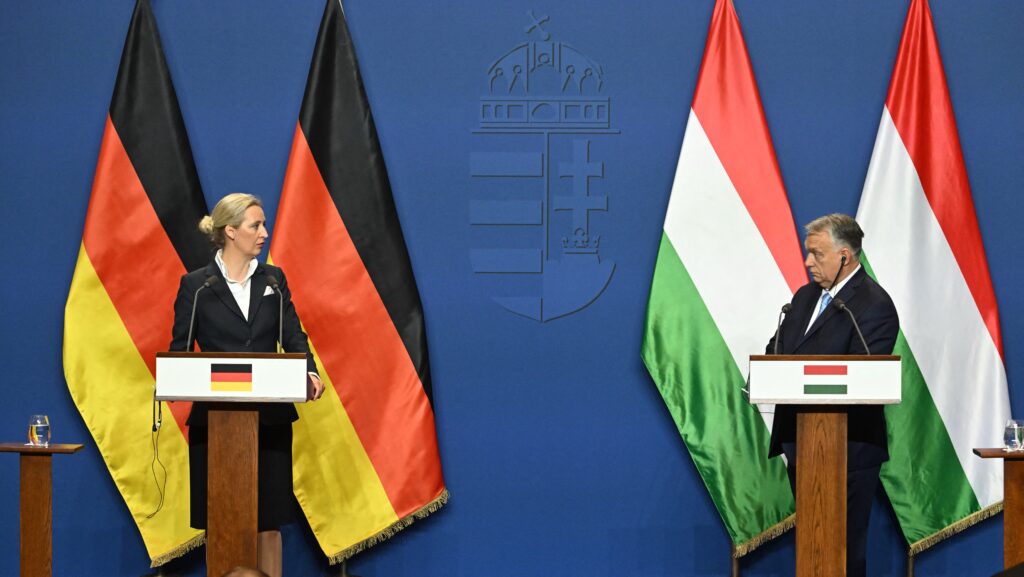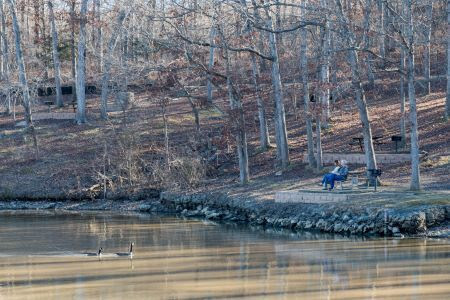Debrecen Earns Spot in Final Round of EU Green Capital Contest – hungarianconservative.com

Report on Debrecen’s Nomination for the 2027 European Green Capital Award
1.0 Introduction
The European Commission has officially shortlisted the city of Debrecen, Hungary, as a finalist for the 2027 European Green Capital title. This report details the city’s nomination, its strategic alignment with the United Nations Sustainable Development Goals (SDGs), and the key initiatives underpinning its candidacy.
Debrecen is one of three finalists selected from a competitive pool of European cities with populations exceeding 100,000. The evaluation criteria focus on demonstrated excellence in urban sustainability and environmental performance. The other finalists are:
- Heilbronn, Germany
- Klagenfurt, Austria
The winner is scheduled to be announced on 2 October in Vilnius, Lithuania, and will be awarded a prize of €600,000 to further its environmental objectives.
2.0 Strategic Alignment with Sustainable Development Goals (SDGs)
The European Commission’s assessment highlighted Debrecen’s exemplary commitment to creating a healthier and more sustainable urban environment, which directly contributes to several SDGs. The city’s comprehensive environmental policy, initiated in 2019, serves as a framework for achieving these global goals at a local level.
2.1 SDG 11: Sustainable Cities and Communities
Debrecen’s efforts are fundamentally aligned with SDG 11, which aims to make cities inclusive, safe, resilient, and sustainable.
- Target 11.7 (Green Public Spaces): The city has increased its green areas by 16% and is executing a large-scale tree-planting programme, directly enhancing public access to green spaces.
- Target 11.6 (Reduce Environmental Impact): The introduction of electric buses and the ‘Green Watchdog’ environmental monitoring system contribute to reducing the city’s per capita environmental impact.
- Target 11.3 (Sustainable Urbanization): The city’s focus on sustainable land use, as noted by the Commission, supports inclusive and sustainable urban planning.
2.2 SDG 13: Climate Action & SDG 15: Life on Land
The city has implemented targeted measures to address climate change and biodiversity loss.
- Climate Action (SDG 13): The planting of over 10,000 new trees, with 10,000 more planned, enhances the urban microclimate and contributes to carbon sequestration.
- Life on Land (SDG 15): The Commission specifically praised Debrecen for its leadership in biodiversity and green space expansion, which are critical for protecting and restoring terrestrial ecosystems. The Civaqua programme, which revitalizes local water bodies, further supports local biodiversity.
2.3 SDG 12: Responsible Consumption and Production & SDG 17: Partnerships for the Goals
Debrecen’s model emphasizes circularity and collaborative governance.
- Responsible Consumption and Production (SDG 12): The city’s recognized efforts in the circular economy demonstrate a commitment to sustainable production and consumption patterns.
- Partnerships for the Goals (SDG 17): The development of the ‘Green Codex’ in cooperation with the University of Debrecen and the establishment of a green task force exemplify a multi-stakeholder approach to achieving sustainability targets.
3.0 Key Initiatives and Achievements
Debrecen’s nomination is supported by a portfolio of concrete environmental projects and policies implemented since 2019.
- The ‘Green Codex’: A comprehensive sustainability framework developed with the University of Debrecen, outlining 50 specific environmental measures and strategies.
- Urban Forestry Programme: An initiative that has already added over 10,000 trees to the city’s canopy, with a commitment to plant an additional 10,000.
- Civaqua Programme: A water management project designed to bring water from the Tisza River into Debrecen, revitalizing the urban water ecosystem.
- Sustainable Mobility: The integration of electric buses into the public transport fleet to reduce emissions and noise pollution.
- Civic Engagement and Governance: The creation of a local green task force and the ‘Future of Debrecen’ movement to foster community involvement in sustainability efforts.
- Environmental Monitoring: The establishment of the ‘Green Watchdog’ system to monitor environmental quality and ensure policy effectiveness.
Analysis of Sustainable Development Goals in the Article
1. Which SDGs are addressed or connected to the issues highlighted in the article?
- SDG 11: Sustainable Cities and Communities: The entire article focuses on the city of Debrecen’s efforts to become a sustainable urban environment, which is the core of SDG 11. The city is praised for “urban sustainability,” “green space expansion,” and creating “healthier, more sustainable urban environments.”
- SDG 13: Climate Action: The article mentions that cities were evaluated on how they address “key environmental challenges related to climate change.” Debrecen’s initiative of planting thousands of trees is a direct action to “enhance the city’s microclimate,” a key climate adaptation strategy.
- SDG 15: Life on Land: The article explicitly highlights Debrecen’s achievements in “biodiversity, green space expansion, sustainable land use.” The large-scale tree planting initiative (“More than 10,000 trees have already been planted”) directly contributes to protecting and restoring terrestrial ecosystems.
- SDG 6: Clean Water and Sanitation: The implementation of the “Civaqua programme to bring Tisza River water into Debrecen” is a significant water management project aimed at ensuring water resources for the city, which is relevant to this goal.
- SDG 7: Affordable and Clean Energy: The city’s action to “introduce electric buses” is a measure to promote clean energy in public transportation, contributing to energy efficiency and reducing reliance on fossil fuels.
- SDG 12: Responsible Consumption and Production: The European Commission’s statement praises Debrecen for its “circular economy efforts,” which directly aligns with the goal of promoting sustainable consumption and production patterns.
- SDG 17: Partnerships for the Goals: The article notes that the city developed the ‘Green Codex’ “in cooperation with the University of Debrecen.” This collaboration between a public authority and an academic institution is a clear example of the partnerships needed to achieve sustainable development.
2. What specific targets under those SDGs can be identified based on the article’s content?
-
SDG 11: Sustainable Cities and Communities
- Target 11.6: Reduce the adverse per capita environmental impact of cities. Debrecen’s efforts to tackle “pollution,” introduce “electric buses,” and implement an “environmental monitoring system” all aim to reduce the city’s negative environmental impact.
- Target 11.7: Provide universal access to safe, inclusive and accessible, green and public spaces. The article directly supports this by stating Debrecen has increased “its green areas by 16 per cent” and is planting tens of thousands of trees.
- Target 11.b: Substantially increase the number of cities and human settlements adopting and implementing integrated policies and plans towards inclusion, resource efficiency, mitigation and adaptation to climate change. The creation of the “‘Green Codex’, a comprehensive sustainability framework that integrates Debrecen’s key strategies and outlines 50 specific environmental measures” is a perfect example of such an integrated plan.
-
SDG 13: Climate Action
- Target 13.2: Integrate climate change measures into national policies, strategies and planning. Debrecen has integrated climate action at the local level through its “new environmental policy focused on sustainability” and the ‘Green Codex’.
-
SDG 15: Life on Land
- Target 15.5: Take urgent and significant action to reduce the degradation of natural habitats, halt the loss of biodiversity. The article mentions that Debrecen “stands out in biodiversity” and is actively working to combat “biodiversity loss.”
- Target 15.9: Integrate ecosystem and biodiversity values into local planning. The city’s focus on “biodiversity” and “green space expansion” as part of its bid for the European Green Capital title shows the integration of these values into its urban development strategy.
-
SDG 17: Partnerships for the Goals
- Target 17.17: Encourage and promote effective public, public-private and civil society partnerships. The collaboration “in cooperation with the University of Debrecen” to develop the ‘Green Codex’ and the creation of a “local green task force composed of young professionals” are prime examples of such partnerships.
3. Are there any indicators mentioned or implied in the article that can be used to measure progress towards the identified targets?
-
For Target 11.7 (Access to green spaces):
- A quantitative indicator is explicitly mentioned: The “16 per cent” increase in green areas.
- Another indicator is the number of trees planted: “More than 10,000 trees have already been planted, with another 10,000 on the way.”
-
For Target 11.b (Integrated policies):
- An indicator is the existence and scope of the integrated policy: The “‘Green Codex'” itself, which contains “50 specific environmental measures,” serves as a measurable indicator of comprehensive planning.
-
For Target 11.6 (Reduce environmental impact):
- An implied indicator is the number or proportion of clean-energy vehicles in the public transport fleet, as evidenced by the introduction of “electric buses.”
- The existence of the “‘Green Watchdog’ environmental monitoring system” is an indicator of the city’s capacity to measure and manage its environmental impact.
-
For Target 17.17 (Partnerships):
- The number and nature of partnerships formed is an indicator. The article points to at least two: the partnership with the “University of Debrecen” and the formation of the “local green task force.”
4. Summary Table of SDGs, Targets, and Indicators
| SDGs | Targets | Indicators |
|---|---|---|
| SDG 11: Sustainable Cities and Communities | 11.6: Reduce the adverse per capita environmental impact of cities. 11.7: Provide universal access to green and public spaces. 11.b: Implement integrated policies and plans for sustainability. |
– Introduction of electric buses. – Implementation of an environmental monitoring system (‘Green Watchdog’). – 16% increase in green areas. – Number of trees planted (10,000+). – Existence of a comprehensive sustainability framework (‘Green Codex’) with 50 measures. |
| SDG 13: Climate Action | 13.2: Integrate climate change measures into local policies and planning. | – Adoption of a new environmental policy focused on sustainability. – Planting trees to enhance the city’s microclimate. |
| SDG 15: Life on Land | 15.5: Halt biodiversity loss. 15.9: Integrate biodiversity values into local planning. |
– Recognition for excellence in biodiversity efforts. – Green space expansion and sustainable land use policies. |
| SDG 6: Clean Water and Sanitation | (Implied) Targets related to integrated water resources management. | – Implementation of the Civaqua programme to manage river water resources. |
| SDG 7: Affordable and Clean Energy | (Implied) 7.3: Improve energy efficiency. | – Introduction of electric buses into the public transport system. |
| SDG 12: Responsible Consumption and Production | (Implied) 12.5: Substantially reduce waste generation. | – Recognition for “circular economy efforts.” |
| SDG 17: Partnerships for the Goals | 17.17: Encourage and promote effective public and civil society partnerships. | – Formal cooperation with the University of Debrecen. – Creation of a local green task force of young professionals. |
Source: hungarianconservative.com

What is Your Reaction?
 Like
0
Like
0
 Dislike
0
Dislike
0
 Love
0
Love
0
 Funny
0
Funny
0
 Angry
0
Angry
0
 Sad
0
Sad
0
 Wow
0
Wow
0




































![Lancaster homeowner’s energy-efficient renovation sparks clash over historic preservation [Lancaster Watchdog] – LancasterOnline](https://bloximages.newyork1.vip.townnews.com/lancasteronline.com/content/tncms/assets/v3/editorial/9/ed/9ed03d32-c902-44d2-a461-78ad888eec38/69050b156baeb.image.png?resize=150,75#)








































